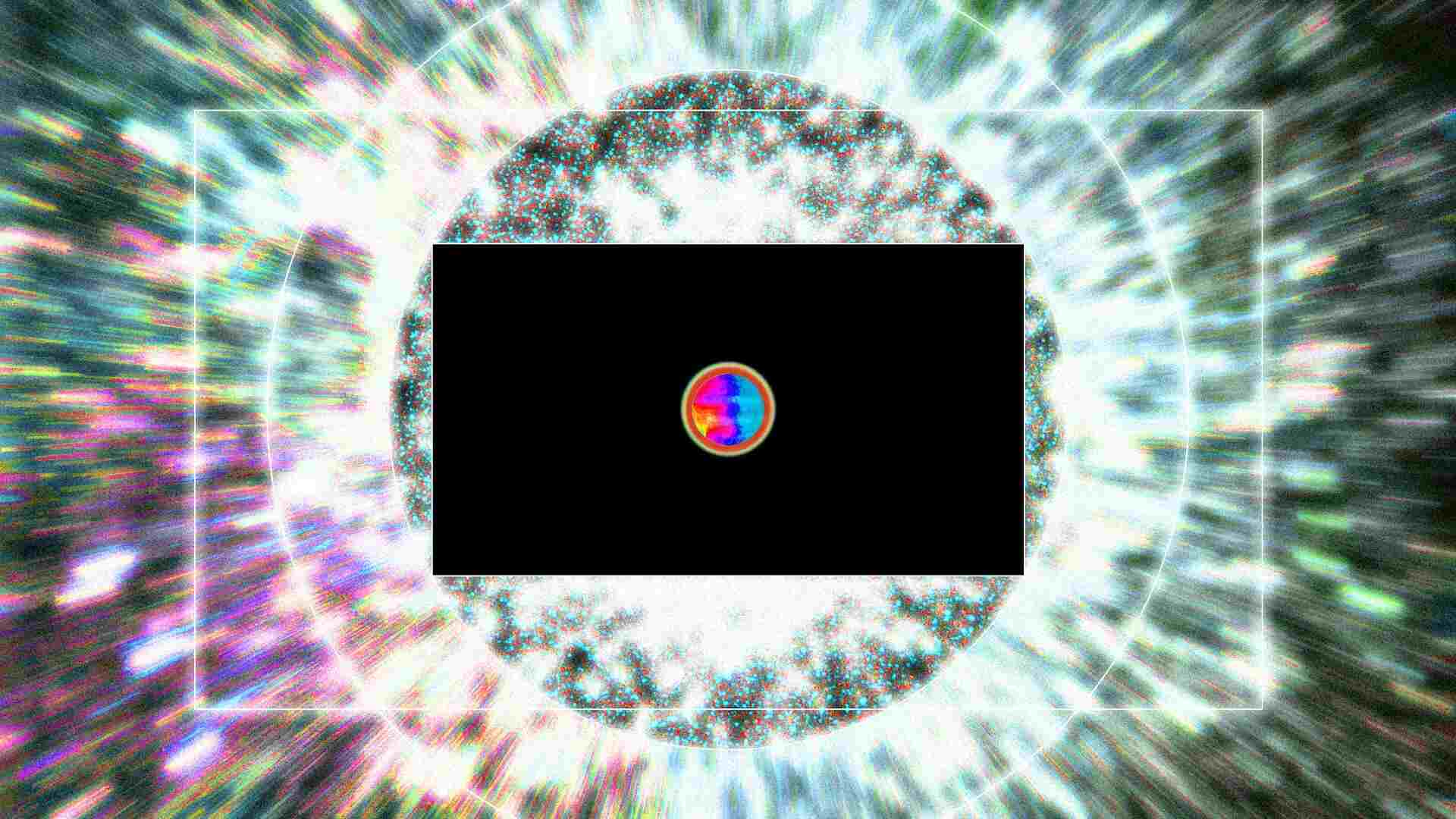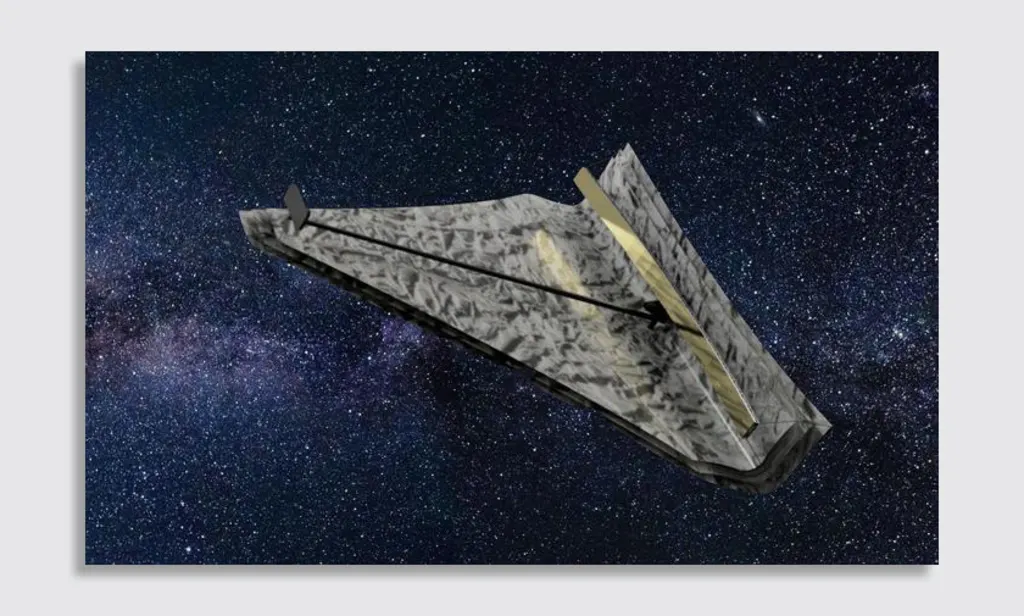- | 8:00 am
This radical new telescope design could upend the search for interstellar life
The world’s greatest space telescopes have all been round. Now, a new rectangular design could turbocharge our search for Earth 2.0.

The search for extraterrestrial life represents one of humanity’s most profound scientific quests—one that could fundamentally reshape our understanding of our place in the universe. Yet current telescopes face an almost impossible challenge: separating the faint glow of planets from stars that greatly outshine them.
Now, a radical new telescope design solves this problem. Unlike current circular telescopes like the Hubble or the James Webb, this design is a long rectangle, about 66 feet long by 3.3 feet tall. According to a new research study published in Frontiers in Astronomy and Space Sciences, the new design will be able to detect a record number of habitable planets in a record time span, while being easier to implement and less expensive than current and future generation of space telescopes.
The author of the study, astronomy professor Heidi Newberg and her team at the Rensselaer Polytechnic Institute in Troy, NY, says it’s a bizarre shape that goes against centuries of telescope building. But Newberg believes the design will vastly improve the chances of discovering extraterrestrial life.
Computer simulations detailed in the team’s research show the rectangular telescope could discover approximately 11 habitable exoplanets around the 15 closest sun-like stars in just one year of operation. Expanding to 46 target stars within 108 light-years, the mission could identify 27 potentially habitable worlds in 3.5 years—meeting NASA’s Habitable Worlds Observatory goal at a fraction of the cost and complexity.

Breaking the circle
Newberg’s design abandons the centuries-old assumption that telescopes must be circular. Instead, Newberg’s team proposes a design that delivers the resolution of a massive circular telescope while fitting into existing launch capabilities for spacecrafts. To do so, the concept leverages an optical principle: resolution depends on the longest dimension of a telescope’s primary mirror.
The technical specifications are deceptively simple and elegant. This is how it works: Imagine you’re trying to spot a firefly sitting next to a giant searchlight from miles away—that’s essentially what astronomers face when hunting for planets around other stars.
Stars are so blindingly bright that any planets orbiting them get completely washed out. To image the planet alone, the telescope uses a device called an Achromatic Interfero Coronagraph—a well-known astronomical device that is basically a sophisticated light-blocking system that works like noise-canceling headphones, but for starlight instead of sound.
It splits the incoming light into separate beams, then smashes them back together in a way that the star’s light cancels itself out while the planet’s light survives the process. The beauty is that this technique only needs to dim the star by about a million times (which sounds impossible but is actually pretty manageable with current technology), rather than the billion-times dimming required when looking at regular visible light. This makes planet hunting dramatically easier than previous methods.
The proposed telescope would use a segmented beryllium mirror—similar to Webb’s successful hexagonal design—folded for launch aboard a Falcon Heavy rocket. And here is where the magic comes in: Unlike circular telescopes that provide uniform resolution in all directions, the rectangular design concentrates its resolving power along a single axis.
To find planets at any angle around their stars, the telescope rotates 90 degrees between observations, effectively scanning the sky in two perpendicular orientations. This is done with a sensor that only looks at a specific type of invisible light called infrared (think heat vision) at a wavelength of about 0.0004 inches, which is where planets that could support life naturally glow the brightest from their own heat.
The problem of this approach is that you need to keep the telescope in a perfectly still point in space at all times while it rotates. Think of the astronomer like a sniper who needs to hit a target the size of a pinhead from 20 miles away—except the target is keeping a space telescope perfectly still while it’s hurtling through space at thousands of miles per hour.
The telescope needs to stay pointed in exactly the right direction with mind-boggling precision: if it drifts off course by even 1.25×10−9 radians—the width of a human hair viewed from 500 miles away—the whole observation gets ruined.
This is actually four times more precise than the already incredibly steady James Webb Space Telescope, and the reason is simple physics—because this new telescope can see finer details along one direction, it’s like having a more powerful zoom lens that amplifies every tiny wobble, so the whole system has to be that much more rock-solid to compensate. It’s a challenge, Newberg says, but it’s doable.
The design faces other technical uncertainties around structural stability, thermal control, and vibration management across its 66-foot span. However, these challenges are comparable to those NASA solved for Webb’s segmented mirror system. The space agency has extensive capabilities for “high-fidelity modeling and environmental test (cryovac and vibration)” that would apply directly to the rectangular design.
Other engineering challenges, while significant, appear solvable with existing technology too. “I have asked scientists to be more expert in space telescope vibration, flexion, and thermal stability and have gotten responses ranging from ‘might be a problem’ to ‘not a problem.’ No one has seen an obvious reason that this would not work,” Newberg tells me.
The race to find life and Earth 2.0
Multiple teams worldwide are pursuing other approaches to overcome the challenge of hunting planets with alien life, each representing billions of dollars in development costs and decades of technological advancement. All of them, however, stick with traditional round mirrors.
The LUVOIR (Large UV/Optical/IR Surveyor), for example, proposes two concepts resembling James Webb, with segmented hexagonal mirrors assembled in a circle, one 26 feet in diameter, the other 49 feet. They will be equipped with an ultra-high-contrast coronagraph capable of blocking starlight by ten billion to one. This visible-light approach demands unprecedented precision in optical engineering.
HabEx (Habitable Exoplanet Observatory) takes a different path: a 13-foot telescope paired with a massive 171-foot starshade that flies 47,600 miles away to physically block stellar light. Moving this enormous shadow between target stars would require immense fuel expenditure.
Another radical approach is the European LIFE mission, which calls for a swarm of small telescopes flying in perfect formation, always coordinated with each other. But if the position accuracy of Newberg’s design is a challenge, LIFE’s requirements are nuts. They need to maintain positioning accuracy “precisely calibrated to the size of a typical molecule,” as Newberg describes it to me. It’s a requirement, she says, that remains “currently infeasible.”
Newberg claims that her team’s design avoids all the pitfalls of its rivals. “I would argue that my concept is the ‘conservative’ one for identifying nearby, habitable exoplanets,” she tells me. “Neither the LUVOIR or HabEx proposals were selected in the National Academies Committee for a Decadal Survey on Astronomy and Astrophysics 2020 because they knew that the technology was not mature enough to develop a reasonable time and cost estimate for these missions”
Engineering trade-offs
That’s not to say that the design doesn’t have limitations. Its infrared sensor can only see a fraction of the spectrum, the one that serves to locate life, but it will not allow us to see the planet or get additional information about it.
“This means that we would need to tune the coronagraph to different wavelengths at different times and take individual exposures to observe different molecules,” Newberg explains.
She also told me that the new design will be perfect to quickly detect the alien life candidates for more detailed observations in the future: “These more complex observatories require more time to develop the technology, and would benefit from a curated list of very interesting targets to observe,” she says.
One limitation of its rectangular design is that it produces elongated “cigar-shaped” point sources rather than round images. “If the Hubble Space Telescope was rectangular, all of those beautiful images would look smeared out in one direction, so that each of the stars would be cigar-shaped,” Newberg acknowledges. For exoplanet hunting, this limitation proves irrelevant—separating two point sources matters more than image aesthetics.
So yes, the planets can be seen as separated from their stars, just not the way you’d see them with your naked eye (although the images will likely be processed into photos that look normal for public use). But as long as the evidence of life is visible, that’s all that matters.
Cost and implementation
This telescope “redesign” benefits both science and taxpayers. Newberg says the cost advantages of this design are substantial compared to any other. While still requiring approximately $1 billion—making it a major space mission—the rectangular telescope would cost significantly less than alternatives demanding new technologies or multiple spacecraft.
The simpler design reduces both development risks and operational complexity, potentially accelerating the timeline to first results by decades compared to more ambitious concepts.
The rectangular concept could revolutionize high-resolution space astronomy beyond this single mission. The same principle could work at different wavelengths—a 66-foot rectangular mirror observing in visible light could theoretically detect Earth-like planets out to 650 light-years, though with far greater technical challenges.
However, the reach of roughly 100 light-years is exactly what’s needed for humanity’s next dream. Within around 100 light-years of Earth lie the only stars we could realistically explore with robotic probes on human timescales. “The closer the exoplanet is, the more likely we could send a probe to investigate, establish communication with its residents, or possibly one day visit,” she says.
Newberg says the telescope could enable a probe that could beam back images of the planet’s surface. “The rectangular telescope could provide a straightforward path towards identifying our sister planet: Earth 2.0,” Newberg says.







































